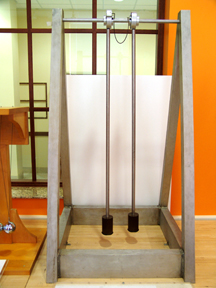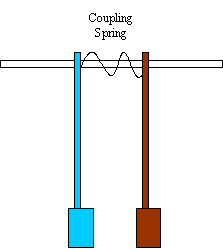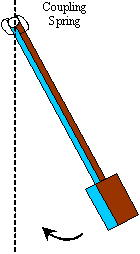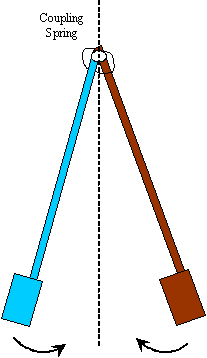
What To Do
- Pull one pendulum toward you.
- Release the pendulum!
WHAT HAPPENS TO THE TWO PENDULA AFTER ABOUT 30 SECONDS
OR 20 OSCILLATIONS (Count them!)?
Answer: The amplitude of the second pendulum increases while the amplitude of the first decreases. The first pendulum eventually stops while the second has a large amplitude. Then the situation is reversed as the second pendulum begins to drive the first. The amplitude of the second pendulum decreases while the amplitude of the first increases again.

What is Happening?:
Energy is transferred between the pendula by the coupling spring that connects them. The oscillation of the second pendulum is being driven by the first.
An Explanation:
The motion of the two pendula can be thought of as the superposition (combination) of two simple motions or normal modes.

Motion 1:
The pendula move side-by-side in phase. The coupling spring transmits no force. The period of the coupled pendula equals that of each pendulum if they were not connected.

Motion 2:
The pendula move in exact opposition, 180o out of phase. The coupling spring exerts an additional (restoring) force which tends to bring the pendulum to it’s rest position, increasing each pendulum’s speed, and thus shortening the period slightly. Because of this difference in periods, the two normal motions get progressively out of step.